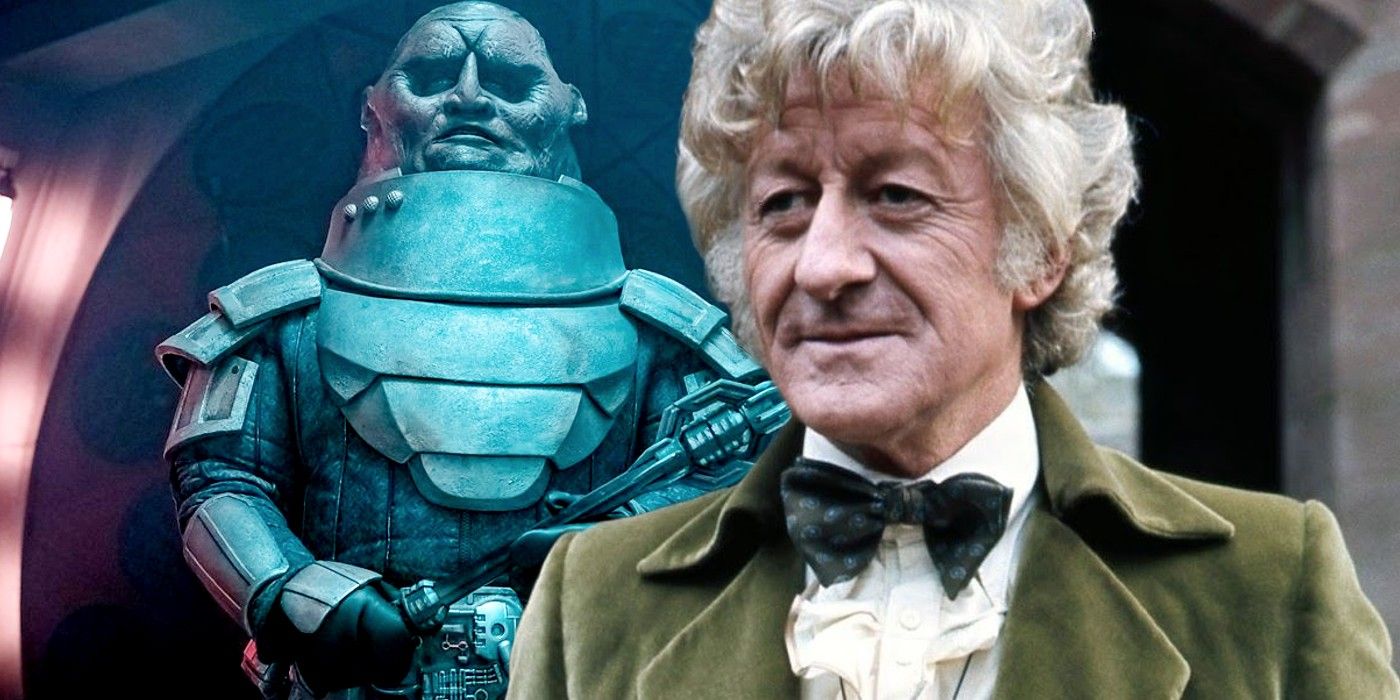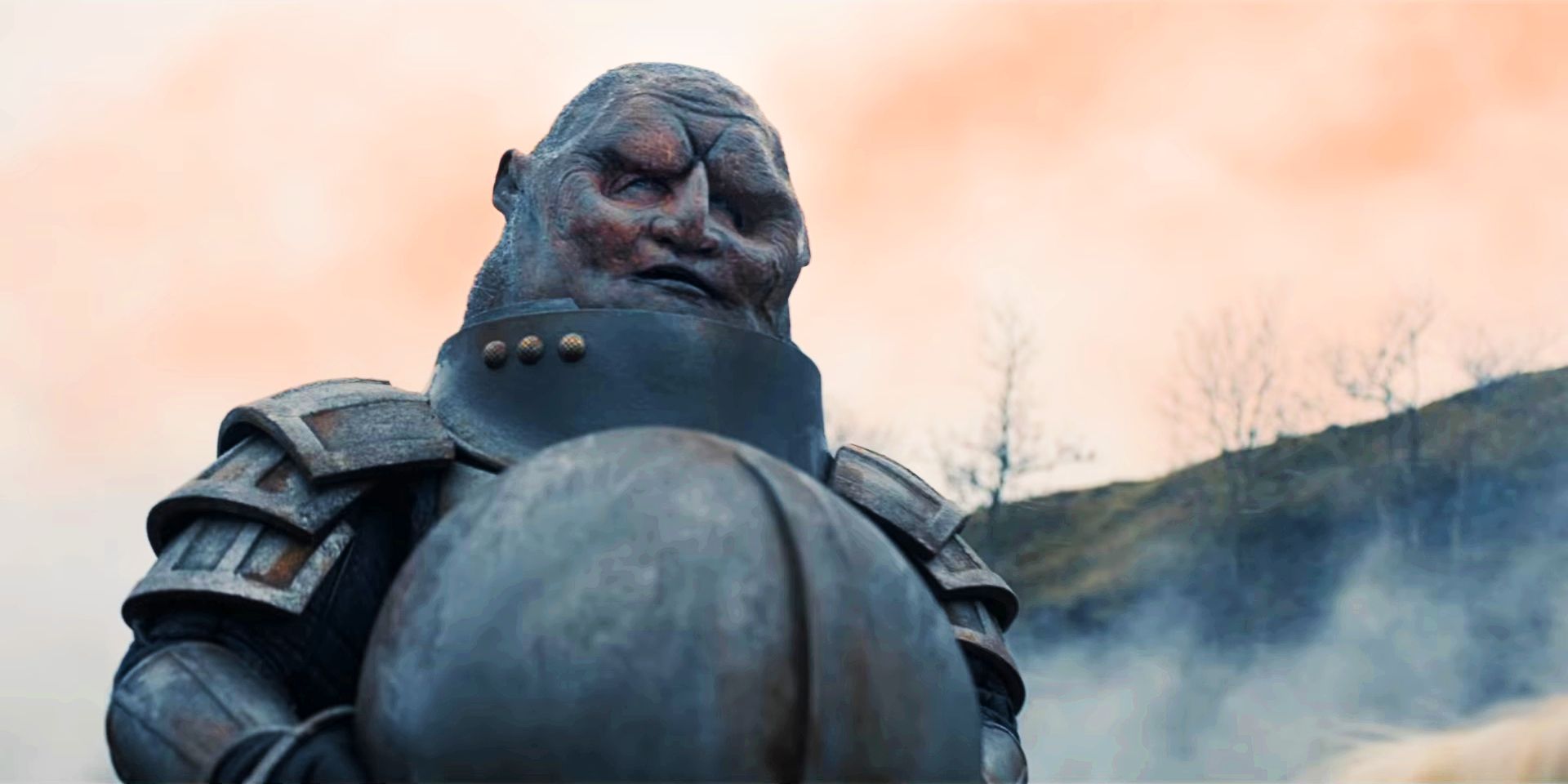Doctor Who: Flux's "War of the Sontarans" might just be the first episode that truly captures the savage, menacing potential these famous villains possessed from the start. Debuting in 1973's "The Time Warrior," Sontarans have long earned their place in Doctor Who's antagonistic pantheon. Initially facing the Third Doctor and Sarah Jane, the Sontarans are a brutal, war-minded race intent on conquest and violence - like Mr. Potato Head but genetically engineered to kill. Sontarans have returned time and time again to annoy the Fourth Doctor, the Sixth and Second Doctors simultaneously, and the Tenth Doctor.
As a species bred for war, Sontarans should bring epic battles and bloody violence, but this has rarely been the case throughout Doctor Who history. "The Time Warrior" is considered Doctor Who's strongest Sontaran-based story by many, but with a budget your local community theater would find restrictive, filming a full-scale invasion was always out of the question. "The Time Warrior" instead focused on a single Sontaran character (Commander Linx) to great effect, and other classic episodes ("The Sontaran Experiment," for instance) followed a similar format. The idea of an elite warrior race attacking Earth's history en masse, however, went frustratingly undelivered.
With "War of the Sontarans," Doctor Who: Flux finally fulfills the original, bloody promise of the Sontaran race, portraying the rage-filled root vegetables as a warmongering force to be truly feared. Visiting a real life historical conflict is a stroke of genius, the horror of the Crimean war bringing the Sontarans' callousness and love of death to the fore. The tactical sorties into enemy territory, the shame of being taken prisoner, the tense pre-fight parlay - "War of the Sontarans" finally shows why these lumpy baddies are renowned throughout Doctor Who's universe, whatever the era. When General Logan's brigade charges headfirst into a bloodthirsty Sontaran column, Doctor Who achieves the epic, no-holds-barred invasion hinted at in 1973 when Commander Linx first landed in the Middle Ages.
Back in Liverpool, the iconic docks are swarming with Sontaran ships, while humans are forced to obey a curfew or risk getting shot on sight. It's a dystopian vision of human life under Sontaran rule that draws upon real-world dictatorships throughout history, adding an even sharper, relevant edge to Doctor Who's new-look Sontarans. The Chibnall era's cinematic visuals convey the oppressiveness of Earth's ugliest alien invaders better than any past episode.
Doctor Who: Flux's Sontarans also strike a better balance between viciousness and humor. The new design is more unsightly, less polished compared to the Tennant-era's "The Sontaran Stratagem", and "War of the Sontarans" doesn't back away from the brutality of war either. In both Crimea and modern day Liverpool. Sontarans murder innocent humans via firing squad, execute their own kind for being captured, and delight in the slaughter of British soldiers at Sevastopol. Chris Chibnall pulls no punches, and his Sontarans are much better for it.
Living up to their horrific reputations for once, Doctor Who's new Sontarans are dangerous and dark - but their humor isn't lost completely. The Doctor still runs rings around their tiny, dense Sontaran minds and pokes fun at their stupidity, while watching John Bishop's Dan slap Sontaran troops down with a wok is brilliantly witty, acknowledging the species' inherent ridiculousness. Modern Doctor Who has previously emphasized the Sontarans' comedy over their killer instincts and bloodlust, going so far as to introduce the Paternoster gang's Strax as a reformed soldier. Doctor Who: Flux restores the Sontarans to what "The Time Warrior" originally intended - but with a much bigger budget that allows the vision of a ruthless invading force to be fully realized.


